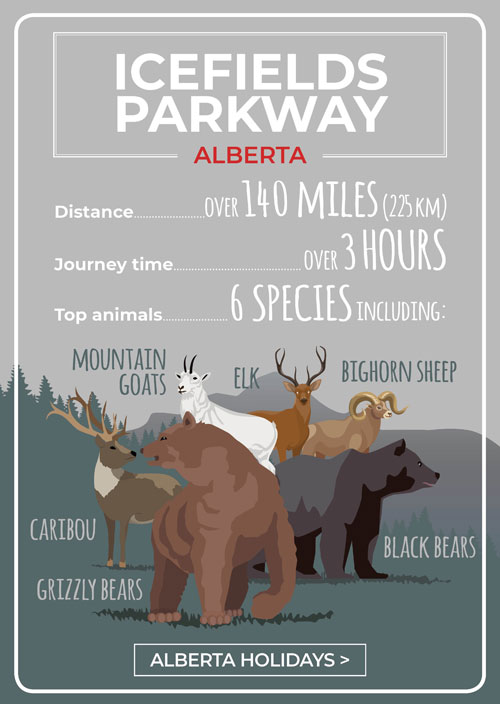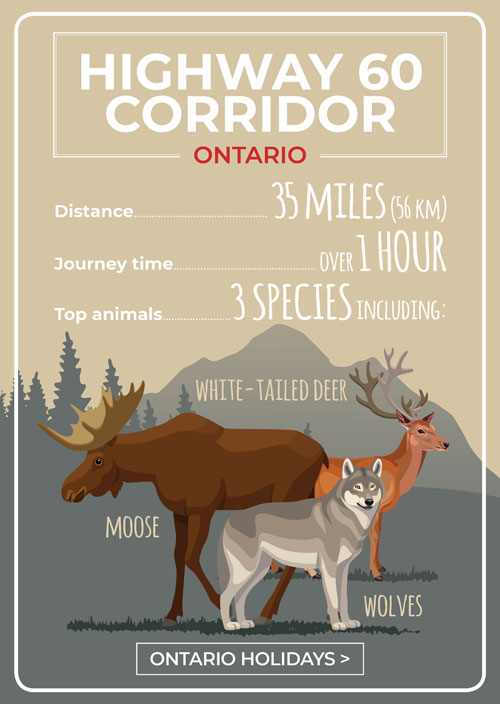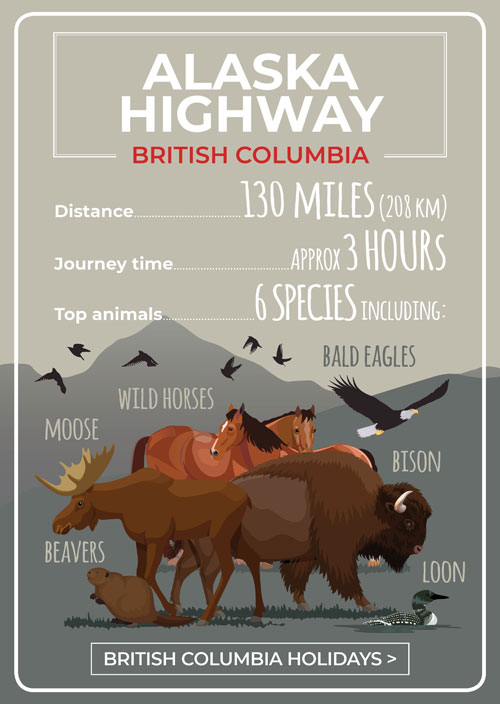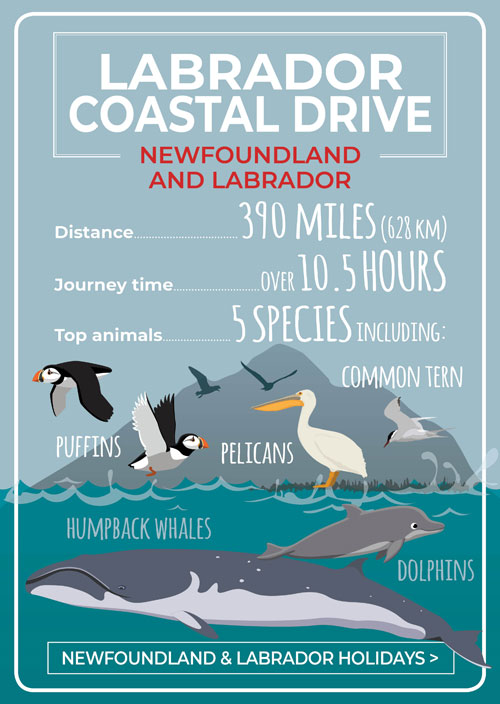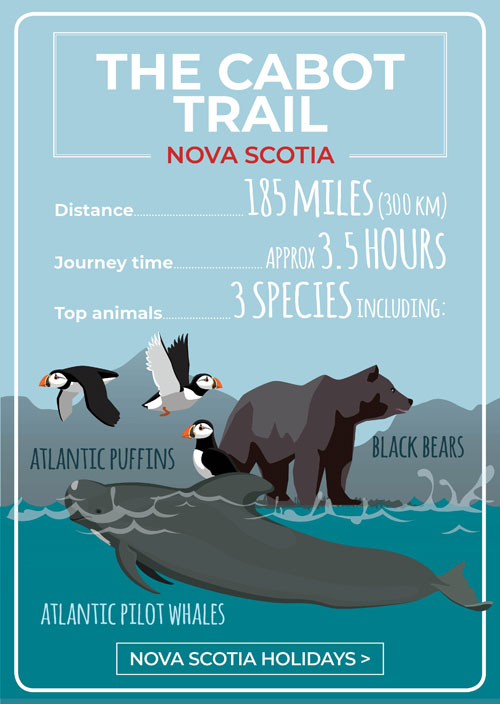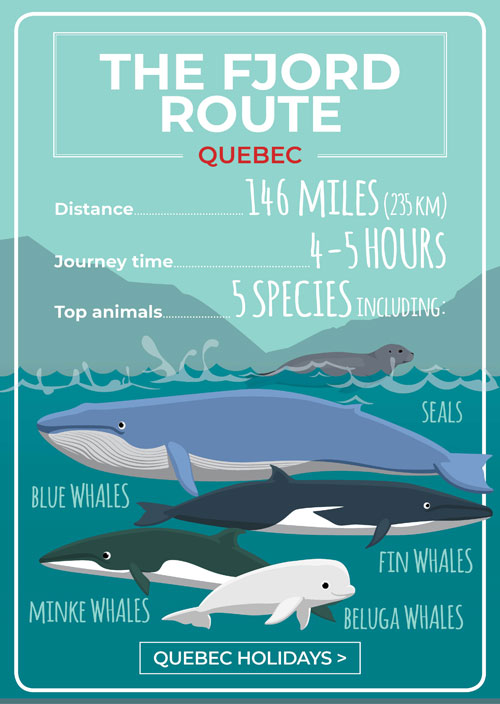When you hear ‘safari’, you might think of the Masai Mara in Kenya, the Serengeti National Park in Tanzania or the Kruger National Park in South Africa. Canada is a destination that often gets overlooked.
But, considering that Canada is home to some of the best scenery, road trips and varied wildlife in the world, we think Canada is the best safari location that you’ve probably never considered! There’s no doubt that Icefields Parkway in Alberta and the Cabot Trail in Nova Scotia are two of the most popular places to go on your own safari, but there are lots of other intimate and authentic safari experiences to try in lesser-known areas of Canada.
Here, we take you through some of the best locations in Canada where you can enjoy your very own safari.
Check out our map below to find out the locations and read below for more information about what you can see on each route.
The best destinations for a Canadian safari
Travel writer and international television host Robin Esrock is the bestselling author of The Great Canadian Bucket List: Once-in-a-Lifetime Travel Experiences. He has visited all of the below routes and tells us that they are great for spotting wildlife.
“I've visited all these amazing routes which put you in close proximity to a who's who of Canadian wildlife. In Prince Albert National Park, it's possible to encounter bison while being on horseback, the advantage being you can get much closer to these magnificent animals. You can snorkel with migrating salmon in Campbell River on Vancouver Island, and always be on the lookout for bears and moose in Newfoundland and on the Icefields Parkway (if you can tear your eyes away from the spectacular scenery).”
MUST READ:
Vancouver Island Oceanside Route
A great destination for wildlife watching is along the Vancouver Island Oceanside Route, which runs from Nanaimo (where the ferry from Vancouver arrives into) up to Campbell River.
If you are using our services for car hire in Vancouver, then driving along this route is a must as the Oceanside Route of Highway 19A is a quiet, nature-focused journey. It boasts a unique landscape: one minute you’ll be travelling through the valleys and beside the ocean and the next you’ll be heading over tall peaks.
The road hugs the coast and, as a result, there are plenty of beachfront towns along the road, such as the picturesque town of Nanaimo.
Although you are still close to some urban areas, there’s lots of Vancouver wildlife for you to see. According to Discover Vancouver Island, there are more than 7,000 black bears on Vancouver Island, making the area one of the most densely populated places in the world for this type of bear. The black-tailed deer is another common sighting along the route and if you’re really lucky, you may even get a sighting of a cougar, grey wolf, or grizzly bear.
MUST READ: Top places to visit on Vancouver Island
Swipe right to see the interactive route map.
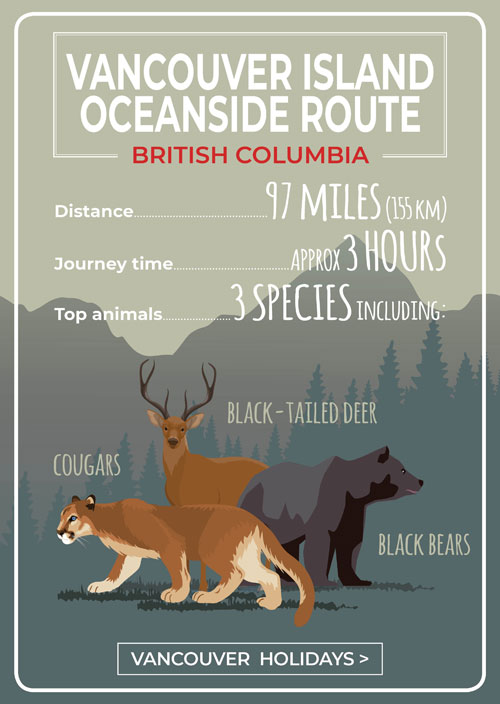
What are the top tips for photographing wildlife?
If you’re planning on hiring a car in Canada for your holiday and driving one of the aforementioned routes, you should follow some of these easy-to-apply tips and advice for photographing wildlife.
Tanya Stollznow, who runs her own wildlife photography blog, recommends the following tips when photographing wildlife:
- “Research the location so that you make the most of opportunities to locate wildlife and the best times and places to photograph them.
- “Aim for simple backgrounds. The most compelling wildlife photos are often the ones where the subject stands out without any distraction.
- “Don’t be afraid to try something different. Aim for different viewpoints and composition.
- “Respect the wildlife and the natural environment.
- “Be aware of and adhere to rules, guidelines and advice offered by the local government and their park rangers.”
Robin Esrock, who has explored more than 100 countries, tells us that photographing wildlife is about moments:
“Capturing wildlife is all about moments, and each moment can be different from one to the next. It’s why people return year after year to their favourite spots, as you never know what you will see. You'll definitely need a good zoom, and it's rare to get super-close to animals, although I have had bears, moose and elk come right past my car. Luck is when preparation meets opportunity. To get the lucky shot you'll be showing people for years, prepare with a decent camera set on a fast shutter speed, a tripod if necessary, a good lens, and plenty of patience.”
The great safari locations in Canada
Just to recap, below are the top places to see animals in the wild in Canada:
- Icefields Parkway
- Highway 60 Corridor
- Highway 2 (Regina to Waskesiu)
- Labrador Coastal Drive
- The Cabot Trail
- Alaska Highway
- Vancouver Island Oceanside Route
- The Fjord Route
If you’ve been inspired to make future travel plans and experience Canada’s incredible wildlife in its natural habitat, then check out our Canada holiday packages. That dream Canadian holiday is just a few steps away.
Latest Articles

Saskatchewan Highlights: Discover the Land of Living Skies


12/11/2025
Often called the 'Land of Living Skies', Saskatchewan offers some of Canada's most unique and spectacular holiday experiences.

Indigenous Experiences in Alberta


31/10/2025
Alberta's Indigenous communities have shaped this province for thousands of years, creating a cultural tapestry that continues to thrive today.

The Ultimate British Columbia Road Trip


17/10/2025
British Columbia offers some of Canada's most spectacular road trip routes, and this incredible 14-day journey through the province's diverse landscapes promises unforgettable memories.

Things you didn't know about Toronto


14/10/2025
Located along Lake Ontario’s northwest shore, the city of Toronto is the capital of Ontario and is known for its dynamic nature, exciting attractions, and green spaces.










